Why are tourists flocking to this Japanese village, which only has two B&Bs?
Advertisement
Remarkable Living
Why are tourists flocking to this Japanese village, which but has two B&Bs?
An hour'south drive from Kyoto, the Miyama region draws visitors to curiosity at villages with traditional thatched roof houses, now preserved as cultural heritage sites.
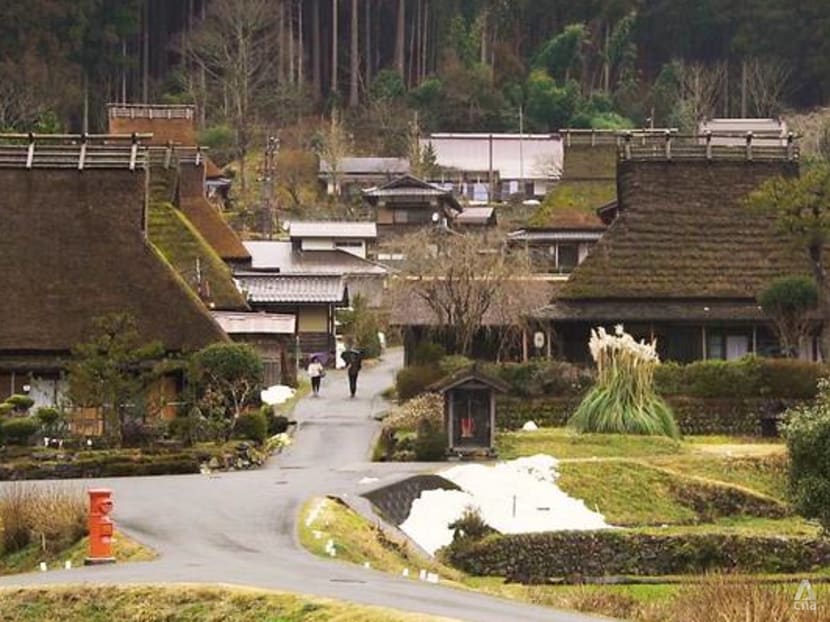
Once a common sight in the Japanese countryside, now simply effectually 200 thatched roof houses remain in Japan. (Photo: Threesixzero Productions)
02 Feb 2022 06:30AM (Updated: 16 Aug 2022 02:59PM)
With very little in the manner of accommodations and dining options, Miyama, or Cute Mountain in Japanese, isn't exactly what y'all'd phone call tourist-friendly. But this countryside town sees its fair share of out-of-towners popping in, ranging from day-trippers and compages aficionados to historians.
You understand the allure of this place once you're physically in that location. Time slows to a standstill – information technology's nothing but you lot and the tranquillity of land life. Residents become almost their business concern tending to their gardens and vegetable plots, turning a blind eye to curious onlookers.
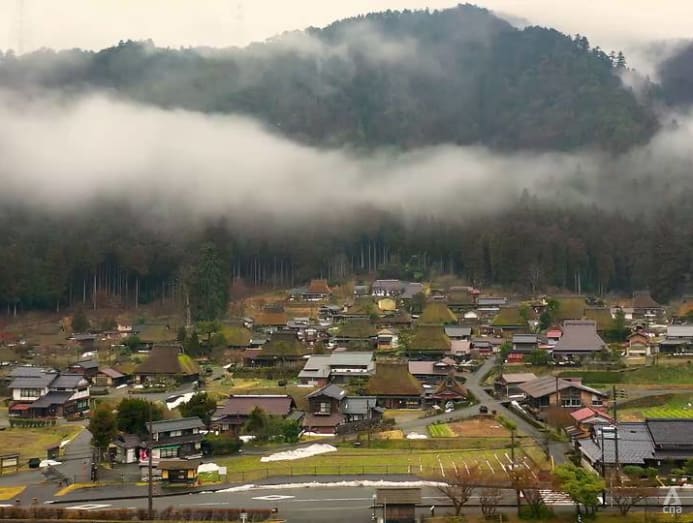
Visitors are free to rent bicycles or walk around, bask the cool, fresh air, and take pictures of traditional thatched houses, juxtaposed confronting a mountainous backdrop. The idyllic, rustic scenery matched by stunning architecture is a refreshing and soothing change from the bustle of Kyoto'southward city life.
Miyama is a living village where the majority of old houses are actual homes for the residents. "I hope visitors can immerse themselves in the countryside and appreciate the scenery we have to offer," said a resident.
WATCH> How this sleepy isle became one of Japan'southward most exciting destinations
Once a mutual sight in the Japanese countryside, at present only effectually 200 thatched roof houses remain. Thirty-nine of them tin be found in Thatched Roof Village, or Kayabuki No Sato, located in the northern sector of Miyama.
These cottages are characterised by a distinct, four-sided hip-and-gable architectural manner, roofed with bamboo struts and dense layers of dried plant matter called Kaya.
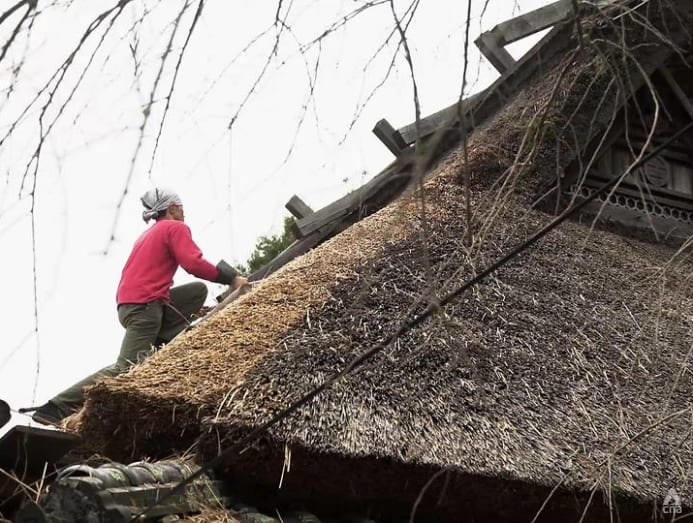
"Kaya… represents the eternity of the soul that is the basis of Japanese culture. And this is represented in the form of the thatched roof," shared professional person roof thatcher, Haruo Nishio.
Nishio moved to Miyama 25 years ago to exist office of a grouping of professional thatchers who live and piece of work at that place to maintain the ancient houses.
"A thatcher like me is a profession that is said to take a history of v,000 years. The techniques have been passed down from a long time ago. I feel happy that I can be part of this long history," he enthused.
Thatched roof houses crave extensive maintenance to preserve their original conditions. The high cost of building materials and manual labour have also added to their decline.
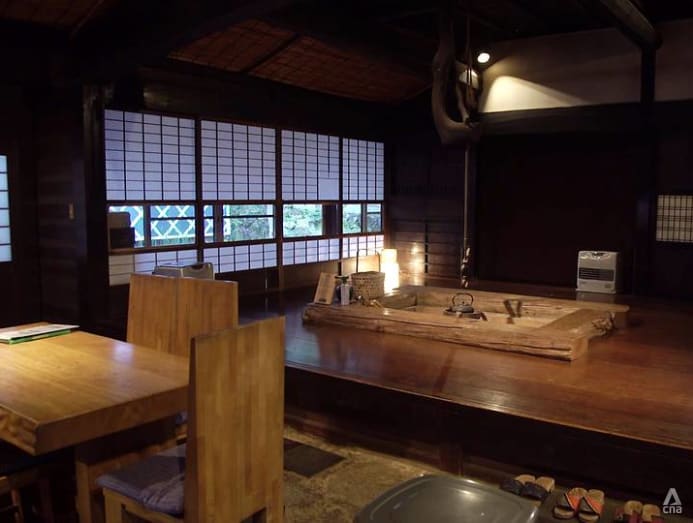
The oldest house in the hamlet was built in 1795 during the Edo catamenia, and the largest is the Hanabusa – a 150-year-old cottage, which features an open up hearth in the heart of the house where people traditionally gather for dinner, drinks and a conversation.
Recognising the cultural value and heritage of these buildings, the Japanese government designated Miyama a Preservation Commune for Groups of Historic Buildings in 1993.
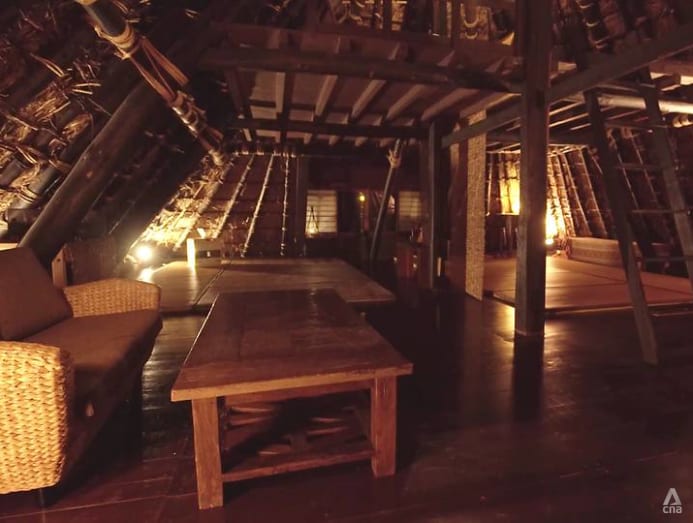
"I remember that came just in time. If it came whatsoever later on, I call up this area would have been rebuilt into tiled roof- or other types of houses," remarked resident Tadaki Nakano.
Despite existence earmarked as a cultural heritage site, the villagers unanimously agreed not to permit over-commercialisation ruin their hometown. That is why at that place are only two B&Bs, two cafes and ane museum – Miyama Folk Museum – which curates items to describe a century-old Japanese house. 1 of the highlights of a museum visit is to see the iconic thatched roof up-shut and discover its engineering marvels.
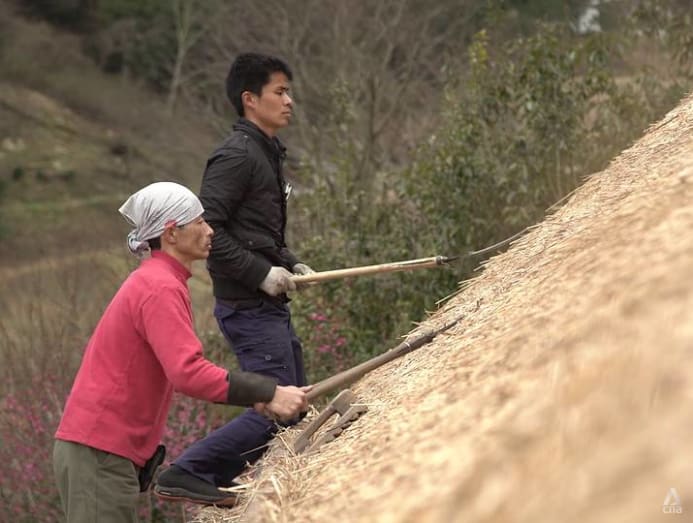
To share his passion for Kayabuki No Sato, Nishio rents out his ain cottage for overnight accommodation, giving guests a fully immersive feel of thatched roof living, consummate with tatami floors, futon beds and an open hearth.
"Guests who are non professional thatchers or cottage owners can enjoy my cottage as though they're the owners."
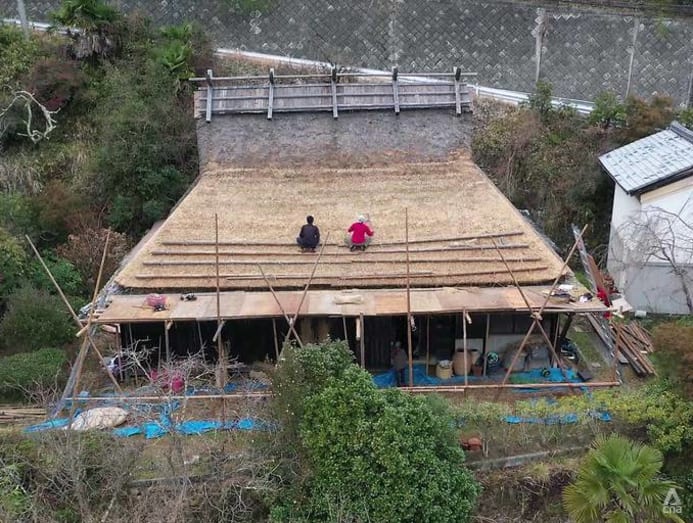
Information technology is Nishio's wish to build equally many every bit 100 thatched cottages in the near future.
"The theme of the thatched cottage is eternity. I hope to preserve it forever to the signal where I tin can tell people that they tin rent my cottages even later 100 years."
Adapted from the series Remarkable Living (Season 3). Watch total episodes on CNA, every Sun at 8.30pm.
Disclaimer: This video was filmed before the COVID-nineteen pandemic.
Picket> In Nippon, a floating ryokan that lets guests enjoy stunning views and island-hop
Recent Searches
Trending Topics
Source: https://cnalifestyle.channelnewsasia.com/remarkableliving/japanese-village-miyama-kyoto-travel-246666

0 Response to "Why are tourists flocking to this Japanese village, which only has two B&Bs?"
Post a Comment